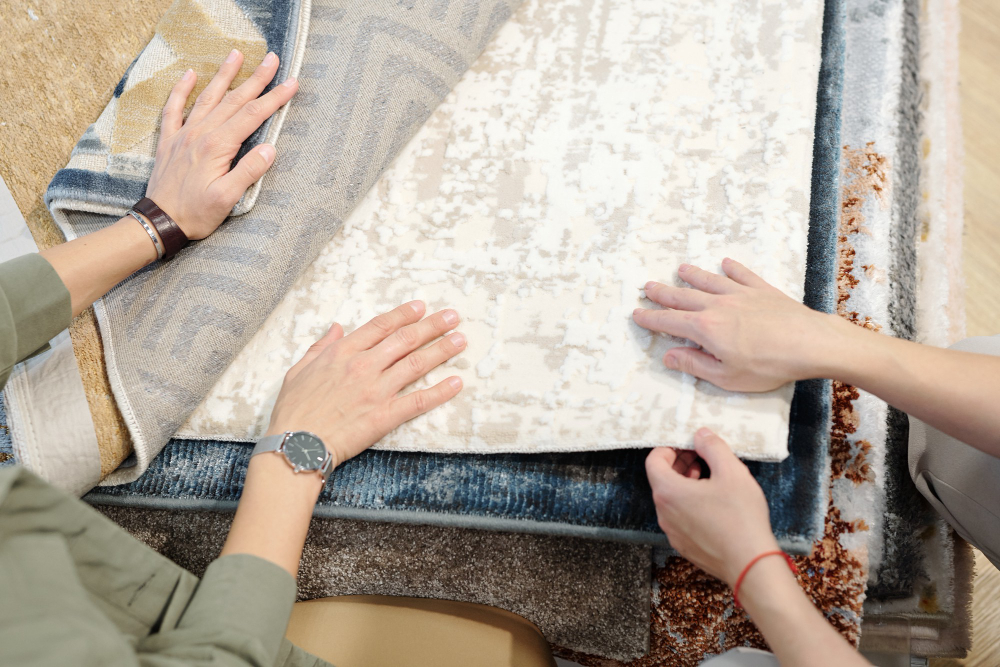Your Guide to Layering Rugs

Looking to transform your space without investing in a complete overhaul? Layering rugs is the ultimate design trick to add texture, personality, and warmth to your home. A well-layered rug setup doesn’t just elevate the aesthetics of your space; it also allows you to play with colors, patterns, and styles to reflect your personal taste.
If you’re in the market for rugs and searching for options near you, be sure to visit a trusted rug store in Paradise Valley, AZ. They can help you find the perfect pieces to create your dream layered look.
This guide will walk you through the ins and outs of layering rugs, from choosing complementary designs to practical tips on placement. Let's get started!
Why Layer Rugs?
Before we jump into how to layer rugs, let's talk about why you should try this approach in your home design. Here are some reasons layering rugs works so well:
- Adds Depth and Dimension: Layering creates visual interest by combining textures, patterns, and colors. This trick can make any room feel more dynamic and thoughtfully designed.
- Defines Spaces: Perfect for open-floor-plan homes, layered rugs can help delineate areas like dining, living, and workspace zones.
- Expands Functionality: A smaller statement rug might look lost in a large room, but when layered with a bigger neutral base rug, it creates balance while showing off the design you love.
Now that you’re sold on the concept, here’s how to do it right!
How to Layer Rugs Like a Pro
1. Start with a Neutral Base
The base rug will serve as your foundation. Choose something large, neutral, and versatile like a jute or sisal rug. These materials are not only sturdy but also add texture without overwhelming the design.
Pro tip: Your base rug should be large enough to anchor your furniture. If you're layering in the living room, the edges of the base rug should extend beyond the coffee table and seating area.
2. Add a Pop of Personality
Once you’ve chosen your base, it’s time to add the top rug. This is where you can go bold with color, pattern, or a unique texture. Persian rugs, cowhide, or sheepskin are great options for your top layer.
For example, a vibrant Moroccan rug layered over a soft jute base creates a striking combination of pattern and subtle texture.
3. Play with Sizes
When layering rugs, size matters. Your top rug should be smaller than the base and leave some of the foundation rug visible. This gives a balanced, intentional look rather than one rug completely swallowing the other.
A good rule of thumb? Leave 12-24 inches of the base rug visible around the edges.
4. Experiment with Shapes
Don’t feel restricted to rectangular rugs! Mixing shapes creates unexpected visual interest. Consider layering a round or asymmetrical rug over a rectangular base for a contemporary twist.
Looking to switch it up further? Try using a runner-style rug at an angle on top of a larger base rug to create depth.
5. Consider Color and Pattern Harmony
For layered rugs to look cohesive, the colors and patterns need to work together—not compete. If your top rug is bold and patterned, keep the base rug subdued and neutral.
Pro tip: Use your room's existing color palette as a guide. For example, if your upholstery leans toward warm tones, pick rugs with earthy hues like terracotta or mustard.
6. Think About Texture
Layering rugs is about more than just colors and patterns. Mixing textures brings an elevated, tactile dimension to any room. Pair plush, high-pile rugs with flat-woven styles, or contrast soft materials with rough, natural fibers like jute.
7. Placement is Key
Layering isn’t just for living rooms! You can layer rugs in any space for an added design impact:
- Bedroom: Place a large, neutral rug under the bed, then add a patterned runner partially tucked under the foot of the bed.
- Dining Room: Anchor your dining table with a large rug, then layer a smaller rug at the center for an unconventional yet cohesive look.
- Entryway: Layer a washable accent rug over a durable base for style that stands up to high-traffic areas.
Common Mistakes to Avoid
Even the best concepts can go wrong if executed poorly. Here are some common layering mistakes to steer clear of:
- Going Too Small: If your base rug is too small, it won’t have enough presence and can make your room feel cluttered rather than cozy.
- Overcrowding with Patterns: Avoid layering two highly ornate patterns that clash and overwhelm the space.
- Ignoring Furniture Placement: Furniture legs should sit comfortably on both rugs for a balanced and grounded look.
Shopping for Layered Rugs in Paradise Valley, AZ
Now that you’re ready to create your layered rug masterpiece, your next question is likely, “Where can I find quality rugs to match my style?” If you’re in the area, stop by Organic Looms, a top-rated rug store in Paradise Valley, AZ, to explore a wide variety of high-quality options.
From sleek modern designs to cozy, traditional styles, their collections are perfect for mixing, matching, and layering.
Elevate Your Space with Layered Rugs
Layering rugs is a simple yet impactful way to enhance your home design, allowing you to showcase your personality and creativity. It’s a thoughtful addition that adds texture, color, and warmth to any space.
If you’re ready to start layering but need a bit of expert input, don’t hesitate to contact Organic Looms, or visit their rug store in Paradise Valley, AZ, today. With a curated selection of high-quality rugs and knowledgeable staff, you’re just a visit away from transforming your space.